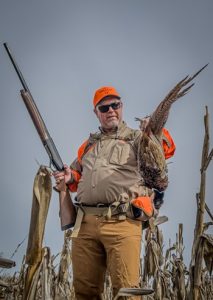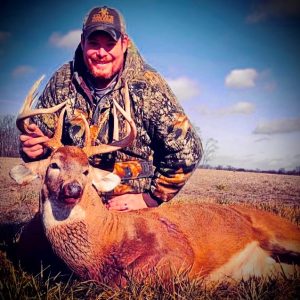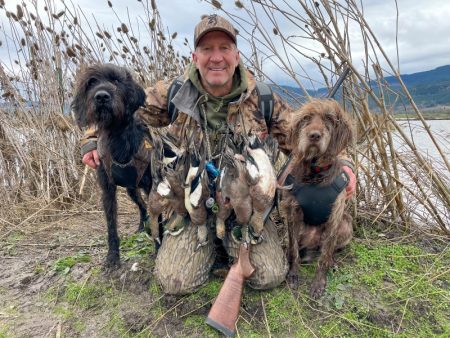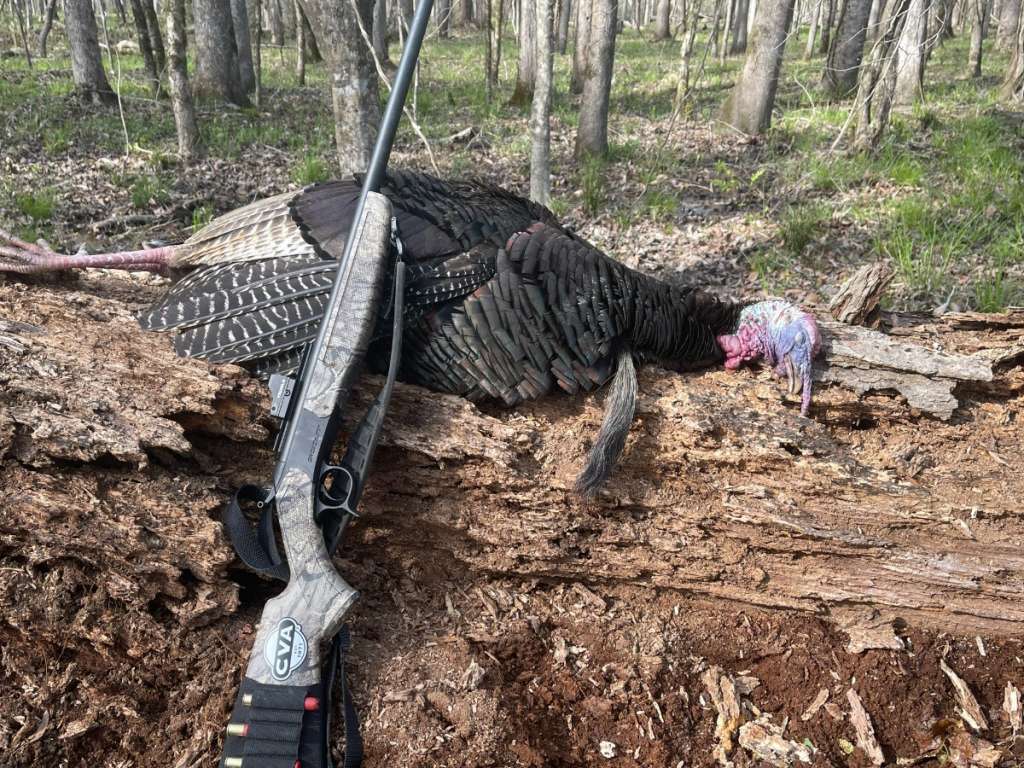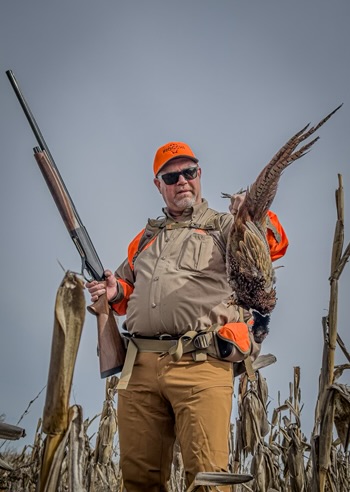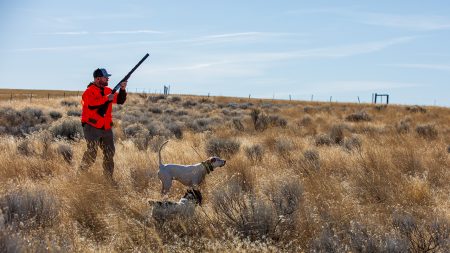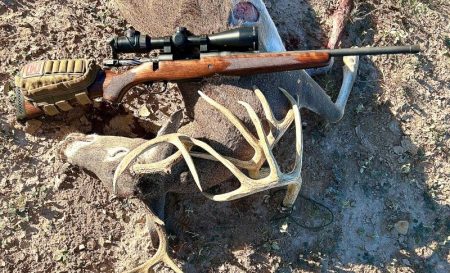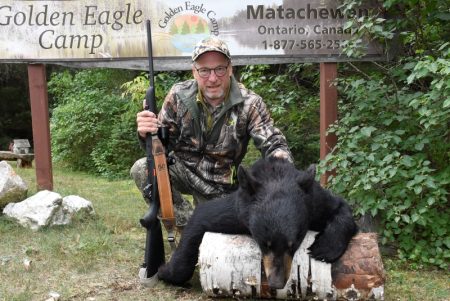The evening before the first day of the spring turkey season here in Ohio, a good friend and I headed out to roost some local birds in hopes of a great opening morning of turkey season. He was excited to learn how to hunt spring turkeys. Just as the sun was setting, we started to get a few gobbles from some distant toms as they headed up to roost for the evening. As the excitement builds, we get a plan together knowing the toms were not as close as we would have liked.
For your convenience, here is a list of the gear mentioned in this article with the best place to purchase.
- Avian-X HDR Strutter
- Stoeger M3500 Shotgun
- Avian-X HDR Hen Decoy
- Avian-X LCD Laydown Hen
- Avian-X HDR Jake Decoy
The next morning as the sun started to rise, I slowly started to drag my striker over the glass on my favorite pot call. I let out a few quick yelps in hopes of getting the attention of one of the gobblers from the evening before. I had the perfect decoy setup along the fence row leading out of the woods, a full strut Avian-X HDR Strutter tom overlooking a lay down hen. For the first 45 minutes after sunrise the sounds of the local songbirds is all I can hear as I continue to work the pot call about every 15 minutes, hoping to get a response. All of the sudden after a few quick yelps I heard a gobble in the distance. I let out a few more yelps from my call and he gobbles again, this time closer. I pick up my Hawke optics binoculars and start to scan the wheat field in the direction of the gobbles.
I find him in the glass just as he finds my decoy spread. I let out a few more quick yelps as he is around 100 yards out. Just like a scripted movie he comes running in to check out my decoys. I raise my Stoeger M3500 shotgun as he closes the 50-yard mark. Once he gets to about 35 yards he breaks out in full strut and starts to stare down my decoy. As soon as he relaxes, I squeeze the trigger. The hunt is over, and I owe a lot of credit to my decoys. When you are turkey hunting, good calling can be an effective tactic especially on unpressured birds. But sometimes calling is not enough to get a tom to commit. This is where decoys come into play. A visual attractant along with calling is enough to fool almost any bird. Knowing how to set up your decoys throughout the season is just as important as the right decoys themselves. Let’s break down how and when to use the decoys so you are prepared to fool any bird this spring.
The King of the Spring
The first phase of the season is all about learning who the king of the spring is. This is one of the few times throughout the season I use a full strut tom decoy. The reason for this is because toms are establishing the pecking order by violently sparing with each other, and the boss tom in the area will for sure move in for a fight. This happens at the start of the season as the days get longer and only lasts a few weeks in most areas. Scouting is vital this time of year to know where the toms are and if things are heating up. If possible, roost the birds the evening before, then observe how the toms are acting. If they are starting to strut around each other and square off for a fight, then grab your tom decoy and be ready for a good hunt. After the pecking order has been established most toms will shy away from a full strut tom, especially if he has been on the losing end of a few fights. During those first few weeks of the season, calling will also be very effective as toms are also looking for the first hens to breed. Use light yelps and clucks followed by some louder clucks when calling.
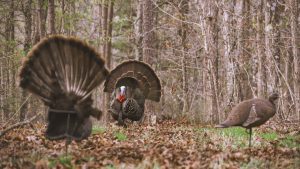
Decoy placement for this phase is simple. I will place a full strut tom about 10 to 15 yards from where I set up and face him toward the direction I anticipate other toms coming from. I like to place 1 to 4 hens out there with him. You can also use a jake decoy if a full strut tom is not available. When a tom comes into this decoy setup, he will be looking for a fight. Once he locates your decoys, he will come in fast, almost running. Make sure once you spot him to get your gun or bow up and be ready. If you can, take a shot prior to him attacking your decoy. I feel that is best. I know it’s fun to watch them attack a decoy, but you could risk spooking him, and he could also damage your decoy.
Desperately Searching
The second phase of the season is all about the hens. After the pecking order has been established, toms and jakes will franticly start to seek out hens. This is the time of the season where you will spot a tom gobbling out in the middle of an open field going in and out of full strut desperately trying to locate a hen. He is doing this to get the attention of any hens close by and let her know he is ready to breed. You will spot toms at all hours of the day during this phase. There are two different decoy tactics I like to use during this phase.
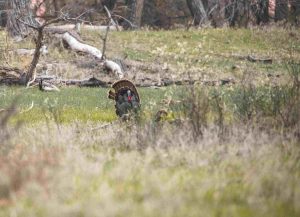
The first is a lone hen decoy like the Avian-X HDR Hen decoy out in the open where she can be seen from a distance. This decoy has 2 different heads allowing you to have an aggressive or more passive setup. I like to use this tactic in an area I know there are turkeys, but I have none roosted from the evening before. This tactic is also great if you don’t have access to multiple decoys.
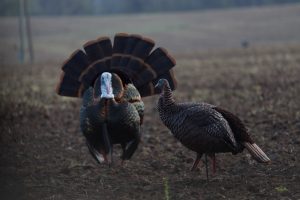
The other tactic I like to employ during this part of the season is a small flock of hens in multiple positions. I will use a mix of feeding hens, look out hens, and relaxed hens. I might even throw a jake in the mix if I know a Tom is close. The more turkey decoys the more visual appeal. For both tactics place your decoys facing you about 25 yards out. The reason being is the toms will approach the hens head on, this gives you plenty of room for an easy shot.
The Dreaded Lock Down.
The third phase of the spring takes place when most of the hens are ready to be breed, and most toms will be locked down on a certain hen or group of hens. This phase ebbs and flows with the searching phase. Once a tom is locked down, he can be almost impossible to harvest. The reason for this is he already has a hen ready to breed, so a hen decoy doesn’t have the same appeal as during the searching phase. And a tom decoy just means competition and more than likely a fight. During this part of the season, I have one decoy strategy that will work most of the time.

I like to use of a jake decoy standing over a single hen. I like to place a hen in a laying down position like the Avian-X LCD Laydown Hen with a jake right behind her, I place them about 15 yards in front of me. Any hen decoy will work but a hen laying down is the breeding position. If a tom sees this, he will for sure be in to investigate. The last thing he wants is a jake breeding a hen before him. I like to face them away from me so that when the tom comes in, he is focused on them, keep in mind he may hang up and strut about 20 yards out trying to get the attention of the hen. My go to jake decoy is the Avian-X HDR Jake Decoy it comes with an aggressive head which I use for this set up and a more submissive head which I will use later in the season.
The Last One to Breed.
This is the last phase of the season. Like I mentioned earlier, searching and locked down ebbs and flows. The reason I listed this as the last phase is as the breeding season comes to an end toms get desperate to find the last breeding hens. Most of the tactics in the searching and locked down phases will continue to work but there is another tactic I like to use more than any other this during this time. This tactic is geared towards the boss tom in your area and can be highly effective. The best way to locate the dominant toms in your area is scouting. When scouting, look for the tom that is in full strut no matter what other birds are around. He will often be the one to run any other jake or tom off, especially if there is a hen close by.
This tactic involves the use of a full strut decoy like the Avian-X HDR Strutter over a lay down hen. I will only do this if I know one of the most mature toms in the area is close by. Any mature tom will come into this decoy set up; most all other toms will shy away from it. If he’s not afraid of a fight and he’s not locked down with a hen, he will fight as hard as he can to breed the last of the hens. As he comes into your decoy spread, he will start to strut, trying to draw in the hen, hence giving you a perfect shot. Once he relaxes, take the shot.
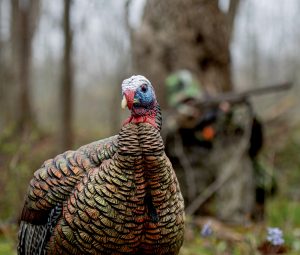
Buying the right decoys is just as important as knowing how you use them. When shopping for decoys, there are a few things to keep in mind. First, buy the most realistic looking decoys you can afford. Remember that turkeys have great vision. Second, decoys can be expensive so if you can only afford one decoy, buy a quality hen decoy that can be used in every phase of the season. Lastly, take care of your decoys. Make sure you store them properly and clean them up after each hunt. I feel that Avian-X makes some of the most realistic decoys on the market and they are built to last. I know they come with a higher price tag but once you place them out next to some of the other decoys on the market, you will know why. With the right decoys and a little calling, you should be able to bag a gobbler every year.
Per our affiliate disclosure, we may earn revenue from the products available on this page.



